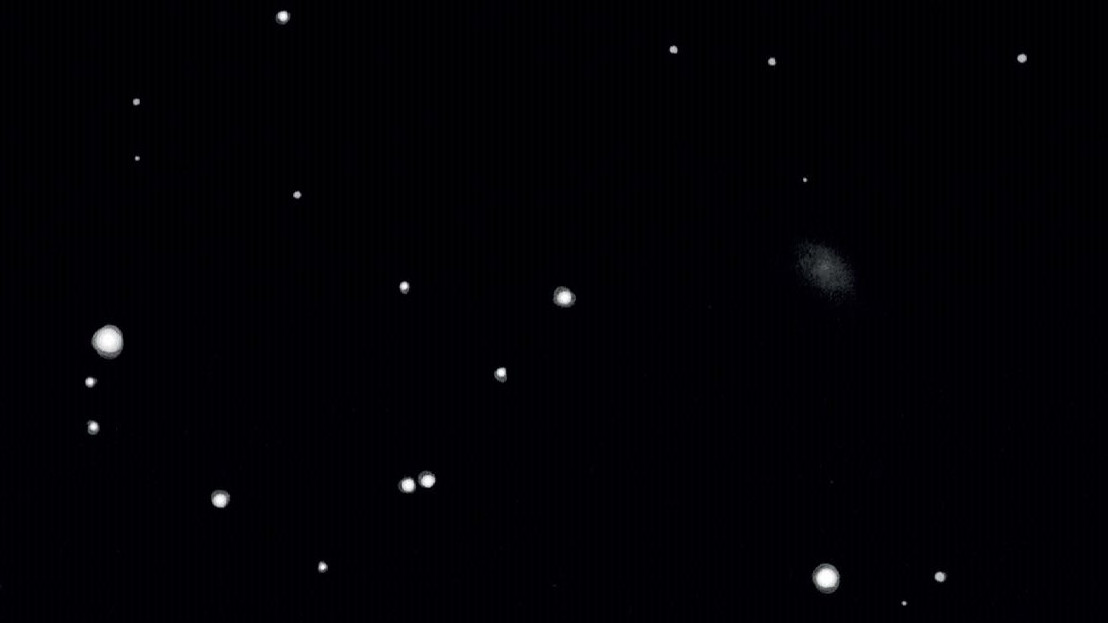Secretive Aries
We find a heavenly golf club and some interesting binary stars for binoculars around constellation Aries.
 Picture of the asterism Collinder 21, which actually belongs to the constellation of Triangulum. The drawing was made using an 8-inch Newtonian telescope with 124 times magnification. Uwe Glahn
Picture of the asterism Collinder 21, which actually belongs to the constellation of Triangulum. The drawing was made using an 8-inch Newtonian telescope with 124 times magnification. Uwe GlahnIf you look at an observing guide, you may conclude that there are no eye-catching deep sky objects in Aries. But instead of immediately rushing to supposedly richer constellations - why not just grab your binoculars and see if you can find something interesting after all?
Binary stars – one easy and one more difficult
Together with Aries’ two brightest stars, Hamal (α Ari) and Sheratan (β Ari), the magnitude 5 star λ Ari forms an almost equilateral triangle, the latter being located about 2° west of Hamal. Even with hand-held 10x50 binoculars separation is easy, the magnitude 6.6 bright companion is located 37" north-east of the primary star.
The other “do-able” binary star in Aries, 30 Ari, is more difficult. When you locate the star, which is to be found just 7° east of Hamal, you will probably not succeed in separating its two magnitude 6.5 and 7 components. However, as we often recommended in these articles, a tripod helps to fully exploit the potential of your binoculars. Then a second star should reveal itself at a distance of 39" to the west of the primary star.
Golf over the border
If you wander a little further with your binoculars, you will encounter a group of stars 6° north of Sheratan. Looking at a good deep sky atlas reveals that it is not a physical object, but asterism Collinder 21. Furthermore, it can be seen that constellation Triangulum dips to the south just at this point, so Cr 21 does not actually belong to Aries.
Regardless, if the seeing is good, the four stars will form a semicircle visible with binoculars. Cr 21 is also known as the Putter Cluster because it looks like the striking face of a golf club, whose neck is formed by a long line of stars stretching north-east.
Double breasted
Inspired by Collinder 21, let’s simply roam around a little while in search of more asterisms. Use your imagination and see if you can find a chain of stars or some other formations. I came across an interesting chain of three or four pairs of stars around 4° west of Sheratan. These are located just 1.5° distant, pointing in a north-south direction. The brightest three pairs consist of stars with a brightness of between magnitude 6.6 and 8.3, and each have a separation of around 12'.
A fourth pair, just below the northernmost one, is a little different: although the two stars are just 8' apart, with a brightness of magnitude 10.2 and 10.6, they can only be observed under good conditions or with larger aperture binoculars.
 The objects on this binoculars tour, which leads not only through the constellation of Aries, but also into the constellation of Triangulum. J. Scholten
The objects on this binoculars tour, which leads not only through the constellation of Aries, but also into the constellation of Triangulum. J. ScholtenAuthor: Kay Hempel / Licence: Oculum-Verlag GmbH
